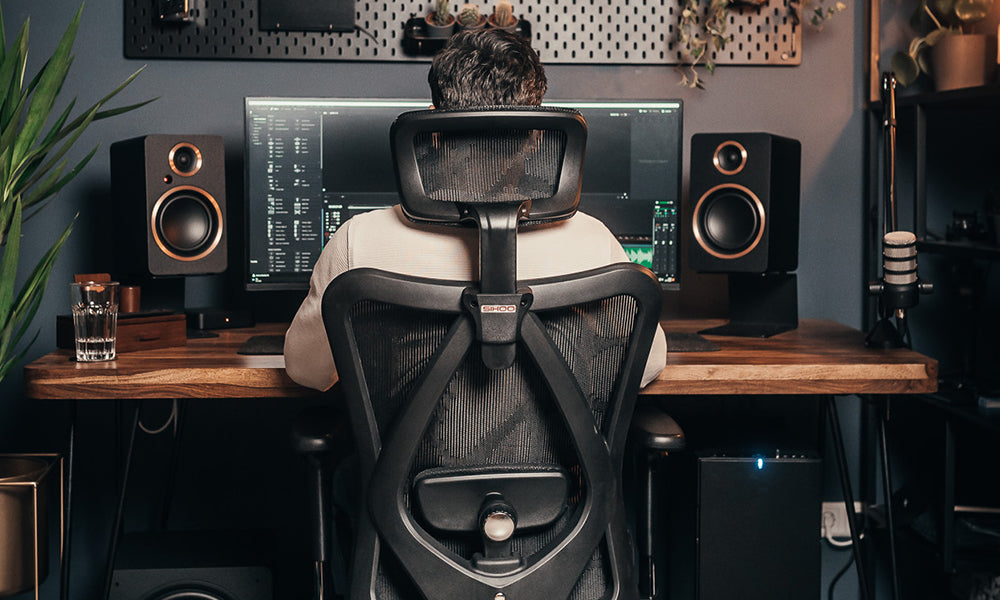Where many of us spend long hours working at desks, the importance of a comfortable and ergonomically designed office chair cannot be overstated. One crucial feature that contributes to a chair's comfort is lumbar support. In this comprehensive guide, we will delve into the nuances of how to position lumbar support on your office chair for optimal comfort and support. Whether you're dealing with lower back pain or simply aiming to enhance your overall well-being during work hours, mastering the art of lumbar support can make a significant difference.
Understanding Lumbar Support
Before we delve into the specifics of positioning lumbar support, it's essential to grasp what lumbar support entails. The lumbar region is the lower part of the spine, consisting of the five vertebrae between the ribcage and the pelvis. Lumbar support in office chairs is designed to provide additional support to this area, helping maintain the natural curve of the spine and preventing discomfort or pain.
Choosing the Right Chair
Before we get into the nitty-gritty of lumbar support positioning, it's crucial to ensure that your office chair is equipped with adjustable lumbar support. Not all chairs are created equal, and having the ability to customize lumbar support is pivotal for tailoring the chair to your unique body shape and preferences. If your chair lacks this feature, consider investing in an ergonomic chair that prioritizes user comfort.
Adjusting Seat Height
To begin the process of positioning lumbar support, start by adjusting the height of your chair. Ideally, your feet should rest flat on the floor, and your knees should be at a 90-degree angle. This foundation sets the stage for proper lumbar support, ensuring that your spine is aligned correctly.
Locating the Lumbar Support Adjustment
Locate the lumbar support adjustment on your chair. This can typically be found as a knob or lever on the backrest, often positioned near the lower part of the chair. Some chairs may have inflatable lumbar support, allowing for a more customized experience.
Experiment with Different Positions
There is no one-size-fits-all when it comes to lumbar support positioning. It's essential to experiment with various positions to find what works best for you. Start by adjusting the lumbar support upward and downward to identify the level that provides the most comfortable support to your lower back.
Focus on the Natural Curve
As you adjust the lumbar support, pay attention to the natural curve of your spine. The goal is to maintain the natural S-shape of the spine, with the lumbar region slightly curved inward. Avoid excessive pressure on the lower back or creating an unnatural curve, as this can lead to discomfort and strain.
Check for Full Back Support
While adjusting lumbar support, ensure that it complements the overall back support provided by the chair. The lumbar support should seamlessly blend with the backrest, offering a unified and supportive structure for your entire back. A well-supported back promotes good posture and reduces the risk of developing musculoskeletal issues over time.
Consider Your Sitting Habits
Take into account your sitting habits and the nature of your work. If you find yourself leaning forward frequently, you may need slightly more pronounced lumbar support to counterbalance the forward-leaning posture. Conversely, if you tend to recline, a more subtle lumbar support setting may be appropriate.
Use Additional Cushions if Needed
In some cases, even with adjustable lumbar support, you might find it beneficial to use additional cushions for extra support. There are various lumbar support cushions available on the market that can be added to your chair to enhance comfort. Experiment with different cushion types and placements to find the optimal combination for your needs.
Regularly Reassess and Adjust
The human body is dynamic, and your comfort needs may change over time. It's crucial to regularly reassess and adjust your lumbar support settings as needed. Factors such as weight fluctuations, changes in physical condition, or prolonged periods of sitting may necessitate modifications to maintain optimal support.
Ergonomic Tips for a Healthy Work Environment
In addition to mastering lumbar support, incorporating other ergonomic practices can contribute to a healthier and more comfortable work environment. Here are some tips:
Take Regular Breaks: Stand up, stretch, and walk around at regular intervals to prevent stiffness and promote circulation.
Eye-Level Monitor: Ensure that your computer monitor is at eye level to reduce strain on your neck and eyes.
Arm and Elbow Positioning: Adjust the height of your chair and desk to maintain a 90-degree angle at your elbows while typing.
Proper Lighting: Adequate lighting reduces eye strain. Position your desk in a way that minimizes glare on your computer screen.
Foot Support: If your feet don't touch the floor comfortably, consider using a footrest to maintain proper posture.
Keyboard and Mouse Placement: Position your keyboard and mouse within easy reach to prevent unnecessary stretching or straining.
Conclusion
Mastering the art of positioning lumbar support in your office chair is a journey toward achieving optimal comfort and promoting overall well-being. The key is to understand your body's unique needs and to experiment with adjustments until you find the perfect balance. A well-positioned lumbar support not only alleviates lower back pain but also contributes to improved posture and productivity. Combine this knowledge with other ergonomic practices, and you'll be well on your way to creating a workspace that prioritizes your health and comfort. Remember, a happy and supported back leads to a more enjoyable and productive work experience.






Dejar un comentario
Este sitio está protegido por hCaptcha y se aplican la Política de privacidad de hCaptcha y los Términos del servicio.